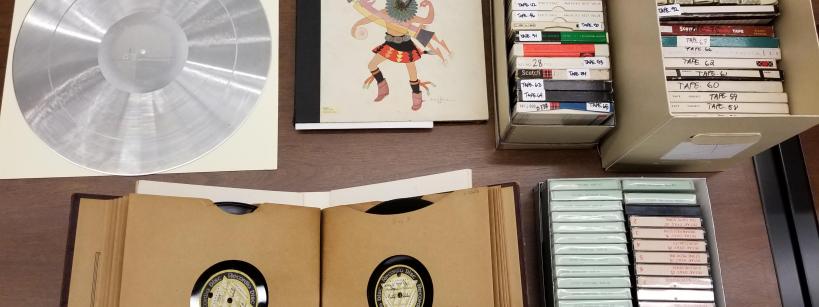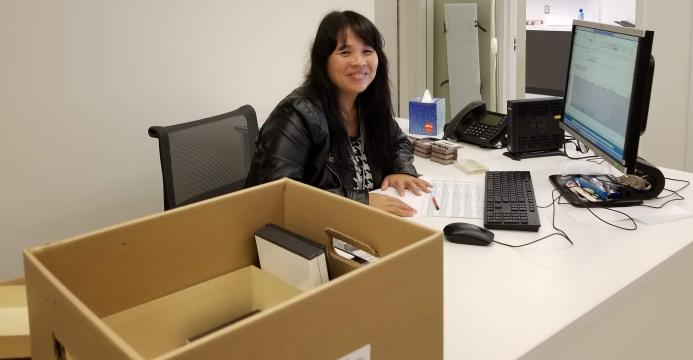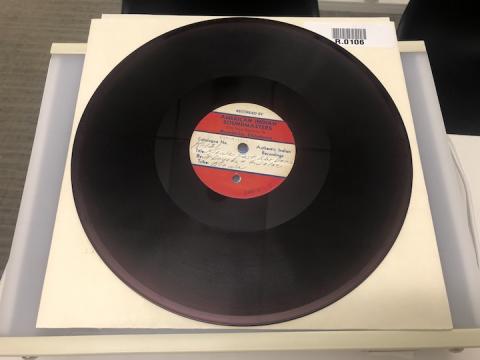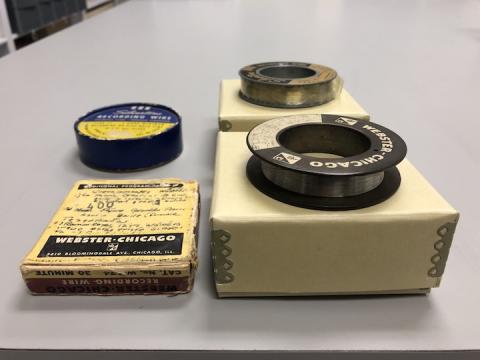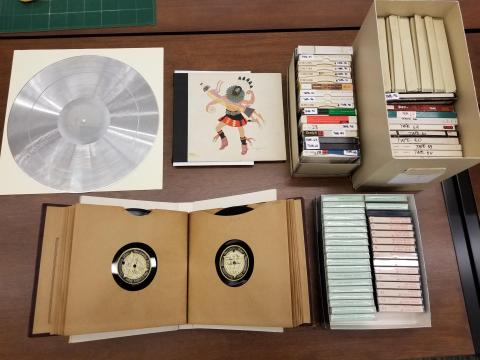By Yuri Shimoda, CLIR Recordings at Risk Intern, Autry Museum of the American West
In September 2018, the Autry received a Council on Library and Information Resources (CLIR) Recordings at Risk grant to digitize hundreds of Native American songs, oral histories, field recordings, plays, and lectures captured on sound and audiovisual media from 1898 to 2007. The recordings were made across such a vast period of time that there were many different formats that needed to be digitized – from open reel tape, wire, and four types of discs to audiocassettes, CDs, and VHS tapes.
These materials came from three different Autry collections. The first were sound and audiovisual recordings of readings and performances by Native Voices at the Autry. Founded in 1994, Native Voices is the country’s only Equity theater company devoted to developing and producing new works for the stage by Native American and First Nations playwrights. Native Voices became the resident theater company of the Autry in 1999, and its archives, which include the items involved in the digitization project, were deposited into the museum’s institutional archives in 2013.
Next were audiovisual recordings of California Indian Arts Association (CIAA) meetings that occurred from 1994 to 2000. The group gathered each month for programs dedicated to the arts, artifacts, and culture of Southern California Native Americans. In addition to meetings, CIAA visited museums and archeological sites. They captured it all on video, and the organization’s founder, Justin Farmer (Ipai), donated the recordings to the Autry in 2017.
Finally, the Audio Collection was comprised of recordings affiliated with 40 California, Southwest, Pacific Northwest, and Plains tribes. All but two of the items were collected for the Braun Research Library’s Sound Archives between 1940 and 1989. These included field recordings of Luiseño, Serrano, and Hopi songs; a 1968 oral history of Tlingit elder William “Squindy” Paul; and rare commercial recordings from the 1940s and ’50s released on the first Native American-owned record labels (American Indian Soundchiefs and Tom Tom Records).
Once the digital files were created, each was reviewed to enrich their descriptions in the Autry’s Library and Archives Catalog and to create finding aids for the Native Voices and CIAA collections that will be posted to the Online Archive of California. All of the collection items were then placed in climate- and humidity-controlled vaults at the Autry’s new Resources Center. Researchers can request to review the Native Voices and CIAA files in person at the Resources Center, but access to the audio collection is currently pending tribal consultation because digitization was just the first phase of the plan that the Autry designed for these recordings.
